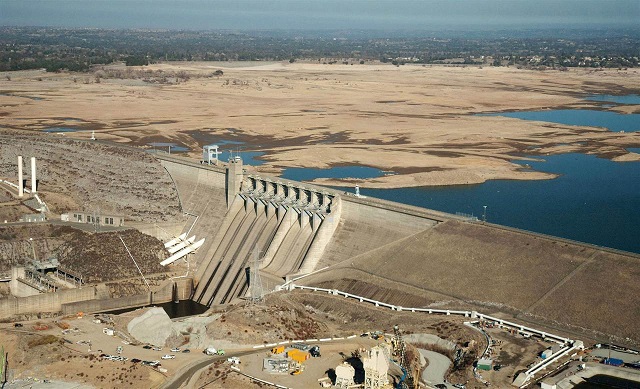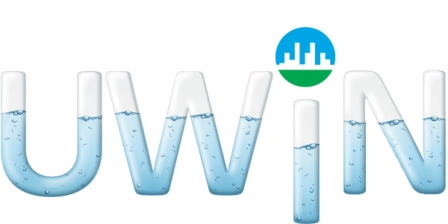By Jorge A. Ramirez
For the full report of this study, click here.
Comparison of projected future water demand and supply across the conterminous United
States indicates that, due to improving efficiency in water use, expected increases in population
and economic activity do not by themselves pose a serious threat of large-scale water shortages.
However, climate change can increase water demand and decrease water supply to the extent
that, barring major adaptation efforts, substantial future water shortages are likely, especially in
the larger Southwest. Because further global temperature increases are probably unavoidable,
adaptation will be essential in the areas of greatest increase in projected probability of shortage.

In this study, vulnerability was evaluated as the probability that water supply is insufficient to meet demand. Current and future water supplies were estimated as local freshwater yield plus the contribution of reservoir releases, inflow from upstream, and water transfers. Demands were estimated as desired consumptive use based on projections of water use drivers and extension of trends in rates of water withdrawal per unit of driver. The analyses were completed for nine separate alternative climatic futures corresponding to three emissions scenarios and to different Global Circulation Models (GCMs). All 98 basins that make up the coterminous United States, called Assessment Sub-Regions (ASRs), were included in this assessment.
Our findings show that the Southwest and central and southern Great Plains are the more vulnerable areas to future climatic and socio-economic changes. This analysis adds to prior work in several ways including an accounting for reservoir storage, trans-basin diversions and routing of water among basins, a more comprehensive effort to project future desired water use, and a probabilistic approach to vulnerability.
The distribution of increase in projected vulnerability (i.e., in probability of shortage) is highly skewed. Averaging across the nine alternative futures, 75 ASRs are projected to face an increase in vulnerability of less than 0.1, 16 ASRs are projected to face an increase in vulnerability of from 0.1 to 0.5, and seven ASRs are projected to face an increase in vulnerability above 0.5. All ASRs with a projected increase in vulnerability greater than 0.1 are in the West. The ASRs with a projected increase in vulnerability greater than 0.5 are located in WRRs 10, 14, and 15.
We find that in some ASRs future increases in the vulnerability of the water supply depends more on reductions in water yield than on growth in water demand. This is supported by the fact that water use has leveled off in recent years as irrigated area in the West has diminished and withdrawal rates in nearly all sectors have dropped. Moreover, although climate change is expected to increase water demand, future reductions in withdrawal rates will mitigate that impact so that overall increases in desired water use in some ASRs are expected to be modest in comparison with the effect of climatic changes on water supply.
The findings of this analysis assume no major modifications to the physical structure of U.S. water networks, and reflect the very simple reservoir operating rules we employed. In addition, in-stream flow requirements and trans-ASR diversions were set constant, thereby ignoring possible future changes in surface water redistribution. Indeed, it was the purpose of this assessment to point to those locations where adaptation will be most needed. Options for avoiding shortages include enlarged trans-basin diversion capacity, within-basin water transfers, forward-looking reservoir operating rules, conjunctive management of surface reservoir storage and groundwater storage, and enhanced water conservation efforts. Because about 80% of the total consumptive use is currently in agriculture, and most water transfers that now occur are from agriculture to other sectors, additional transfers from agriculture are likely.
A traditional option for avoiding shortages is to increase reservoir storage. However, our simulations at the ASR scale show that only a few areas in the West would benefit from additional storage. In other locations storage levels either do not drop to zero or, if reservoirs do empty they never recover. This latter situation is most dramatically demonstrated along the Colorado River, where storage levels in the ASRs containing Lakes Powell and Mead are projected to drop to zero and only occasionally thereafter add rather small amounts of storage before emptying again. Thus, major increases in reservoir storage capacity do not appear to be a successful adaptation strategy in many of the most vulnerable regions. It is important to note, however, that these results apply to aggregate ASR storage, and do not preclude the possibility of useful additions to storage in selected upstream locations.
Additional References:
- Foti, R, J.A. Ramirez, and T.C. Brown, 2014: Response surfaces of vulnerability to climate change: the Colorado River Basin, the High Plains, and California. Climatic Change. DOI 10.1007/s10584-014-1178-0
- Foti, R., J.A. Ramirez, and T.C. Brown, 2014: A probabilistic framework for assessing vulnerability to climate variability and change: the case of the US water supply system. Climatic Change. DOI 10.1007/s10584-014-1111-6

This is some awesome thinking. Would you be interested to learn more? Come to see my website at UY6 for content about Thai-Massage.
This was a very good post. Check out my web page 46N for additional views concerning about Cosmetics.
As someone still navigating this field, I find your posts really helpful. My site is FQ7 and I’d be happy to have some experts about Data Entry like you check it and provide some feedback.
An excellent read that will keep readers – particularly me – coming back for more! Also, I’d genuinely appreciate if you check my website QU9 about Airport Transfer. Thank you and best of luck!
The way you put together the information on your posts is commendable. I would highly recommend this site. You might also want to check my page 81N for some noteworthy inputs about Airport Transfer.
An excellent read that will keep readers – particularly me – coming back for more! Also, I’d genuinely appreciate if you check my website QN5 about Car Purchase. Thank you and best of luck!
An interesting topic and I’m glad to come across your page where I found some helpful insights. Check out my website Article Star too, if you need additional resources about Website Design.
Hey there, I appreciate you posting great content covering that topic with full attention to details and providing updated data. I believe it is my turn to give back, check out my website Article Sphere for additional resources about Social Media Marketing.
Superb and well-thought-out content! If you need some information about Esports, then have a look here Articleworld
Great site with quality based content. You’ve done a remarkable job in discussing. Check out my website Articlecity about Disabilities Education & Services and I look forward to seeing more of your great posts.
Hey there, I appreciate you posting great content covering that topic with full attention to details and providing updated data. I believe it is my turn to give back, check out my website Autoprofi for additional resources about Accident Car Purchase.
Superb layout and design, but most of all, concise and helpful information. Great job, site admin. Take a look at my website ArticleHome for some cool facts about Mobile Operating Systems.
You’ve done an impressive work on your website in covering the topic. I am working on content about Vapes and thought you might like to check out Seoranko and let me what you think.
Great post! I learned something new and interesting, which I also happen to cover on my blog. It would be great to get some feedback from those who share the same interest about Accountancy, here is my website Webemail24 Thank you!